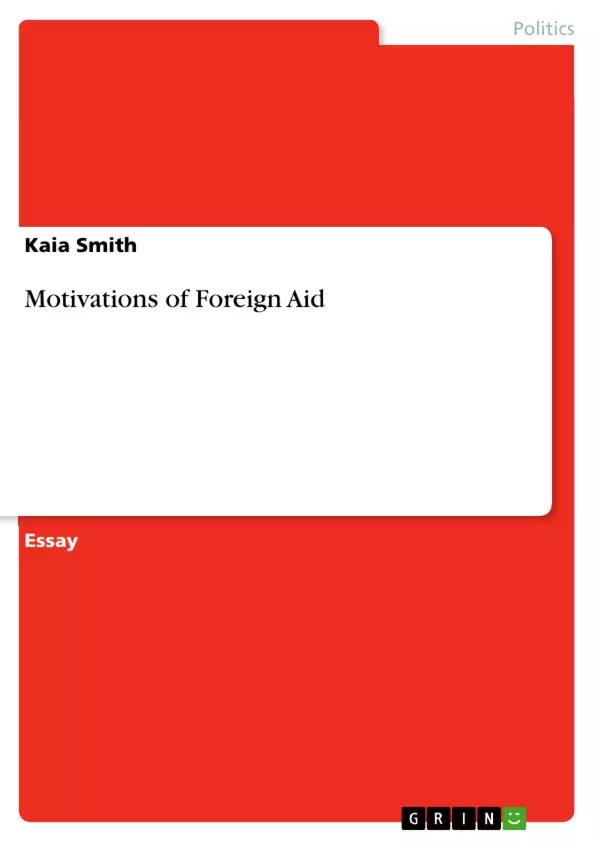As individuals, we are quickly and emotionally affected by knowledge of the difficult economic conditions that inhabitants of the developing world must deal with. We may feel relief in knowing that our national governments are making an effort to share their wealth through bilateral aid to these struggling countries; we may also make our own individual efforts to donate our own time and resources to international organizations that specialize in economic development. However, how often does the average citizen question the sincerity of these efforts? Can we trust that our efforts are translated effectively into effective aid once it reaches the receiving country? It seems that there are many complicated and veiled issues behind the simple image that most donor governments and aid organizations project to citizens of the developed world. In other words, although it is commonplace to imagine that aid efforts and good intentions go hand in hand, it may be important to separate these two variables in looking at the result of aid effectiveness or ineffectiveness. In order to look more closely at this issue, I would like to explore the question: What explains the motivation of developed countries in giving financial aid to the Third world? This should give insight on the issue of whether changes need to be made in the ideology, planning and structure of development economics.
Inhaltsverzeichnis (Table of Contents)
- Motivations of Foreign Aid
- Traditional View of Foreign Aid
- Conditional Aid
- Non-Conditional Aid
- Ineffectiveness of Foreign Aid
- An Alternative View of Foreign Aid
Zielsetzung und Themenschwerpunkte (Objectives and Key Themes)
This text examines the motivations behind foreign aid, exploring the complex relationship between donor countries and recipient nations. It seeks to understand the factors that drive aid provision, questioning whether the stated goals of economic development are truly reflected in aid practices.
- The interplay between altruism and self-interest in foreign aid
- The impact of trade networks and political ties on aid allocation
- The effectiveness of various aid strategies, including structural adjustment programs and microfinance
- The role of conditionality and debt in shaping economic development
- The influence of elite interests on foreign aid policies
Zusammenfassung der Kapitel (Chapter Summaries)
The first part of the text presents the traditional view of foreign aid, arguing that donor countries are genuinely motivated by a desire to help developing nations. It highlights the role of institutions like the World Bank and IMF in promoting economic development and discusses various aid modalities, including conditional and non-conditional aid. It also acknowledges the challenges of aid effectiveness, attributing past failures to policy mistakes rather than intentional exploitation.
The second part shifts the focus to an alternative perspective, arguing that foreign aid often serves the self-interests of donor countries. This perspective emphasizes the influence of trade networks, colonial legacies, and the profit-generating potential of foreign aid. It critiques the design and implementation of development projects, questioning the role of external actors in shaping development policies.
Schlüsselwörter (Keywords)
This text centers on foreign aid, economic development, self-interest, altruism, trade networks, conditionality, debt, microfinance, structural adjustment, exploitation, satellite-metropole relationship, and elite interests.
- Arbeit zitieren
- Kaia Smith (Autor:in), 2011, Motivations of Foreign Aid, München, GRIN Verlag, https://www.grin.com/document/411972



